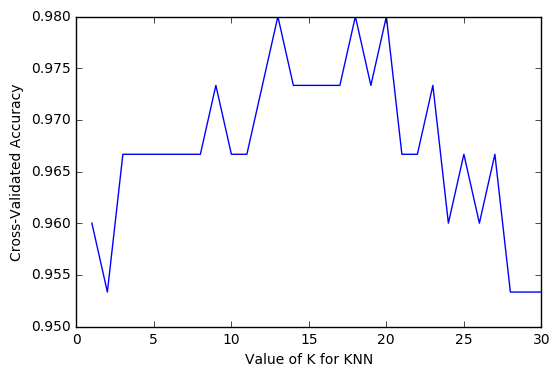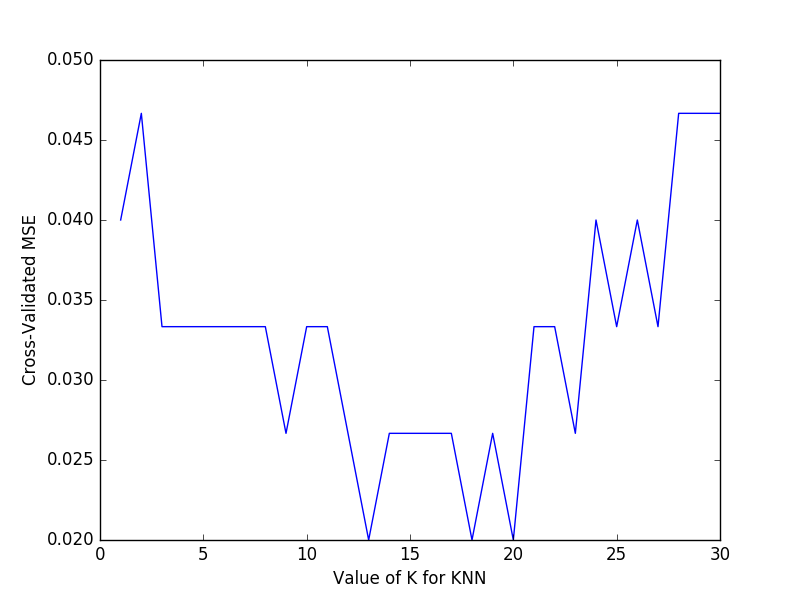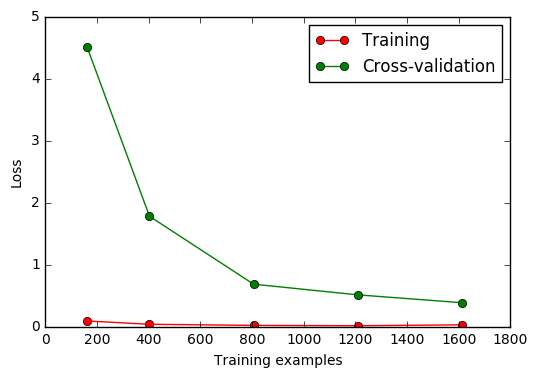一、选择正确的Model基础验证法
from sklearn.datasets import load_iris # iris数据集
from sklearn.model_selection import train_test_split # 分割数据模块
from sklearn.neighbors import KNeighborsClassifier # K最近邻(kNN,k-NearestNeighbor)分类算法
#加载iris数据集
iris = load_iris()
X = iris.data
y = iris.target
#分割数据并
X_train, X_test, y_train, y_test = train_test_split(X, y, random_state=4)
#建立模型
knn = KNeighborsClassifier()
#训练模型
knn.fit(X_train, y_train)
#将准确率打印出
print(knn.score(X_test, y_test))
# 0.973684210526 基础验证的准确率
二、选择正确的Model交叉验证法(Cross-validation)
交叉验证的基本思想是把在某种意义下将原始数据(dataset)进行分组,一部分做为训练集(train set),另一部分做为验证集(validation set or test set),首先用训练集对分类器进行训练,再利用验证集来测试训练得到的模型(model),以此来做为评价分类器的性能指标。

from sklearn.cross_validation import cross_val_score # K折交叉验证模块
#使用K折交叉验证模块
scores = cross_val_score(knn, X, y, cv=5, scoring='accuracy')
#将5次的预测准确率打印出
print(scores)
# [ 0.96666667 1. 0.93333333 0.96666667 1. ]
#将5次的预测准确平均率打印出
print(scores.mean())
# 0.973333333333三、准确率和平均方差
一般来说
准确率(accuracy)
会用于判断分类(Classification)模型的好坏。
import matplotlib.pyplot as plt #可视化模块
#建立测试参数集
k_range = range(1, 31)
k_scores = []
#藉由迭代的方式来计算不同参数对模型的影响,并返回交叉验证后的平均准确率
for k in k_range:
knn = KNeighborsClassifier(n_neighbors=k)
scores = cross_val_score(knn, X, y, cv=10, scoring='accuracy')
k_scores.append(scores.mean())
#可视化数据
plt.plot(k_range, k_scores)
plt.xlabel('Value of K for KNN')
plt.ylabel('Cross-Validated Accuracy')
plt.show()
从图中可以得知,选择
12~18
的
k
值最好。高过
18
之后,准确率开始下降则是因为过拟合(Over fitting)的问题。
一般来说
平均方差(Mean squared error)会用于判断回归(Regression)模型的好坏。import matplotlib.pyplot as plt
k_range = range(1, 31)
k_scores = []
for k in k_range:
knn = KNeighborsClassifier(n_neighbors=k)
loss = -cross_val_score(knn, X, y, cv=10, scoring='mean_squared_error')
k_scores.append(loss.mean())
plt.plot(k_range, k_scores)
plt.xlabel('Value of K for KNN')
plt.ylabel('Cross-Validated MSE')
plt.show()
由图可以得知,平均方差越低越好,因此选择
13~18
左右的
K
值会最好。
四、由学习曲线(Learning Curve)来检视过拟合(Overfitting)的问题
from sklearn.learning_curve import learning_curve #学习曲线模块
from sklearn.datasets import load_digits #digits数据集
from sklearn.svm import SVC #Support Vector Classifier
import matplotlib.pyplot as plt #可视化模块
import numpy as npdigits = load_digits()
X = digits.data
y = digits.targetcv=10
, 选择平均方差检视模型效能
scoring='mean_squared_error'
, 样本由小到大分成5轮检视学习曲线
(10%, 25%, 50%, 75%, 100%)
:
train_sizes, train_loss, test_loss = learning_curve(
SVC(gamma=0.001), X, y, cv=10, scoring='mean_squared_error',
train_sizes=[0.1, 0.25, 0.5, 0.75, 1])
#平均每一轮所得到的平均方差(共5轮,分别为样本10%、25%、50%、75%、100%)
train_loss_mean = -np.mean(train_loss, axis=1)
test_loss_mean = -np.mean(test_loss, axis=1)plt.plot(train_sizes, train_loss_mean, 'o-', color="r",
label="Training")
plt.plot(train_sizes, test_loss_mean, 'o-', color="g",
label="Cross-validation")
plt.xlabel("Training examples")
plt.ylabel("Loss")
plt.legend(loc="best")
plt.show()






















 1865
1865











 被折叠的 条评论
为什么被折叠?
被折叠的 条评论
为什么被折叠?








